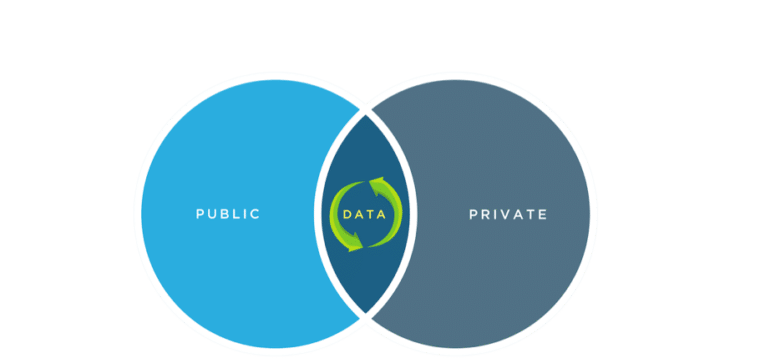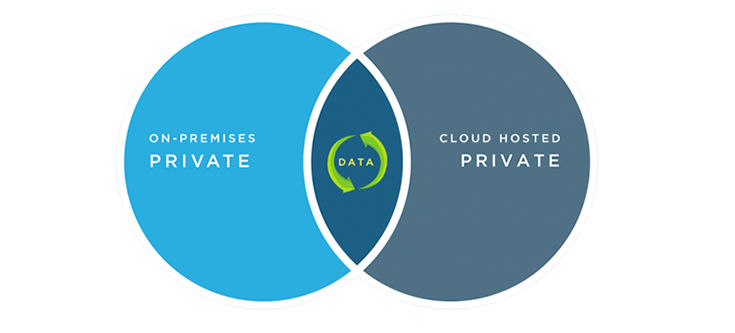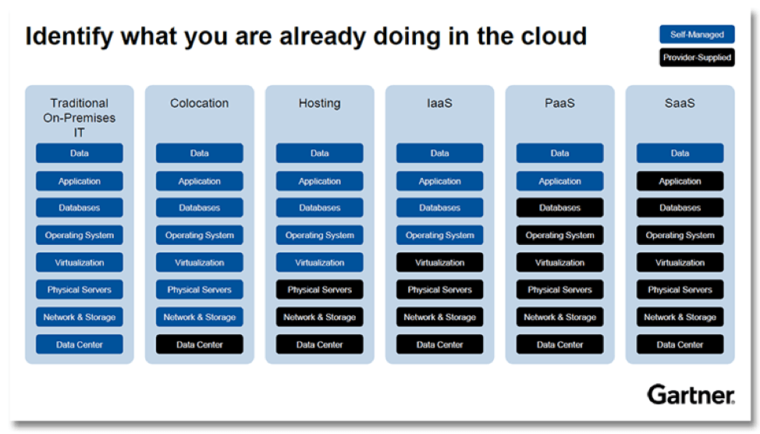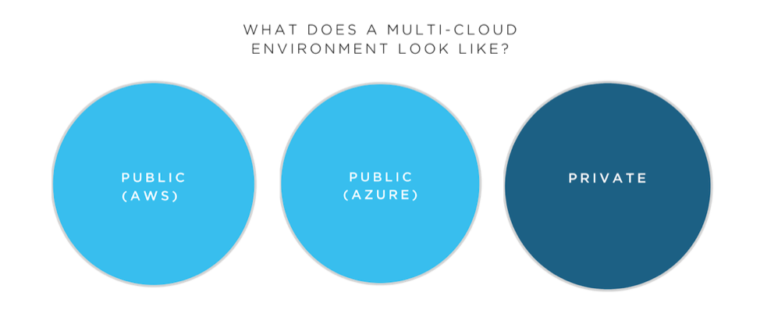
The Latest Nutanix News
Product and Solution Information, Press Releases, Announcements
| Hybrid Cloud vs Multi-Cloud: What's the Difference? | |
| Posted: Mon Feb 11, 2019 10:21:16 AM | |
|
The arrival of cloud computing to enterprise IT brought much more than new business value and end-user utility. Most notably, confusion. An entirely new set of terms was created to describe the many varieties of virtual data storage and transmission. First, we learned about private clouds, or cloud environments that were created to only support workloads from a specific organization. Private cloud infrastructure like this is usually, but not always, created utilizing resources within a company’s own on-premises data center. Then as time progressed, someone told us about public clouds, or clouds that are publicly accessed and consumed. This means that all hardware-based networking, storage, and compute resources are owned and managed by a third-party provider like Amazon Web Services (AWS), Microsoft Azure, or Google Cloud Platform (GCP). Though workloads are partitioned for data security, these resources are shared by the customers of a particular public cloud provider. With now two types of clouds to account for, we would naturally need terminology to describe the transmission of applications and data between public and private clouds. This architecture is what we define as a hybrid cloud. As an encrypted highway of sorts, hybrid cloud allows operators to perform a single task leveraging two separate cloud resources. However, keep in mind that most hybrid cloud environments utilize two separate private clouds. The key to remember is that hybrid combines the resources of two different clouds – could be two private, two public, or a mix of both. If you were to visualize a Venn diagram, and assigned an on-prem private cloud on the left and a cloud hosted private on the right, a hybrid cloud would entail the sum of both parts. The overlapping space in the middle represents the encrypted layer.
Figure 1: An illustration of how a hybrid cloud environment enables data sharing between two different types of private clouds
Figure 1A: An illustration of how a hybrid cloud environment enables data sharing between public and private clouds This middle ground between clouds provides a vital bridge for data transmission. It allows organizations to leverage cloud capabilities without compromising productivity or security. Scenarios in which a hybrid cloud model is utilized include:
Figure 2: A diagram highlighting the differences between cloud service types Hybrid cloud infrastructure provides notable flexibility for organizations. You enjoy the secure access of on-premises resources while also having the rapid scale and elasticity of the public cloud. Not to mention, the encrypted data sharing allows for industries who manage hypersensitive information to consume cloud services. For example, public sector entities, law offices, financial service institutions, and healthcare providers. Organizations from these industries can share data as needed with external partners while still adhering to regulatory compliance guidelines. HIPAA, ISO, PCI-DSS, CIS, NiST and SOC-2 are all regulatory guidelines that govern how sensitive personal data is stored and shared. But what about environments that utilize both public and private cloud infrastructures though data isn’t shared between them? How do we categorize this scenario? A “multi-cloud environment” would be the right answer. These types of cloud environments differ from hybrids, as they suggest the presence and usage of many clouds without the guaranteed interoperability between them. Utilization of this emerging architecture is growing as it provides access to several service models within the cloud. According to Gartner, 70% of enterprises will be implementing a multi-cloud strategy by the end of this year.
Figure 3: An illustration of how public and private clouds exist in a multi-cloud environment, but do not share data or applications between any of the individual clouds One common misconception when comparing hybrid and multi-cloud infrastructures is that the two are mutually exclusive. The explicit definition of a multi-cloud environment, more than one, suggests that a hybrid cloud model is also indeed a multi-cloud model. However, the inverse is not always true. A multi-cloud configuration can be hybridized but it can also exist without the need for individual clouds to talk to each other.
Figure 4: An illustration of how public and hybrid clouds can exist in a multi-cloud environment, but do not share data or applications between all of the individual clouds The most obvious reason for this siloed approach is data security. Despite having data encryption and other threat prevention capabilities, cloud operators still fear the minimal exposure to risks associated with moving data in between clouds. That doesn’t mean however, they won’t have a use for operating many clouds at one time. Organizations from both the public and private sectors are increasingly presented with business justifications for managing workloads amongst several cloud providers. In these instances, the clouds are running multiple tasks. Clouds aren’t sharing data or computational power for a single output like in the case of the hybrid environment. Aside from security, many organizations literally stumble into a multi-cloud environment as they don’t have a business justification for sharing apps or data between clouds. So, what is the key takeaway for hybrid or multi-cloud success? Though I’m glad you now have clarity when it comes to hybrid and multi-cloud environments, knowing the difference between the two is table stakes. The key for success with both deployments in being able to holistically manage your resources as if they were in one location. Managing resources in their respective cloud without considering the adjacent environments will result in wasted capacity and budget. You need deep visibility and insight into your multi-cloud or hybrid environment to achieve your desired business outcomes. Luckily for you, Xi Beam from Nutanix provides the holistic capabilities you need for success. Beam goes beyond provider-based optimization tools and delivers holistic cloud analytics, centralized cost governance, intelligent consumption planning, and security compliance for your entire cloud environment. With reliable supply data across your entire cloud environment, you can identify and eliminate underutilized resources, compare cloud vendors, and provision the optimal instances for each application – helping you avoid vendor lock-in. The best thing you can do at this point is to see it in action for yourself. If you’re interested, enjoy a free 14-day trial of the platform to test it out. What do you have to lose? |







